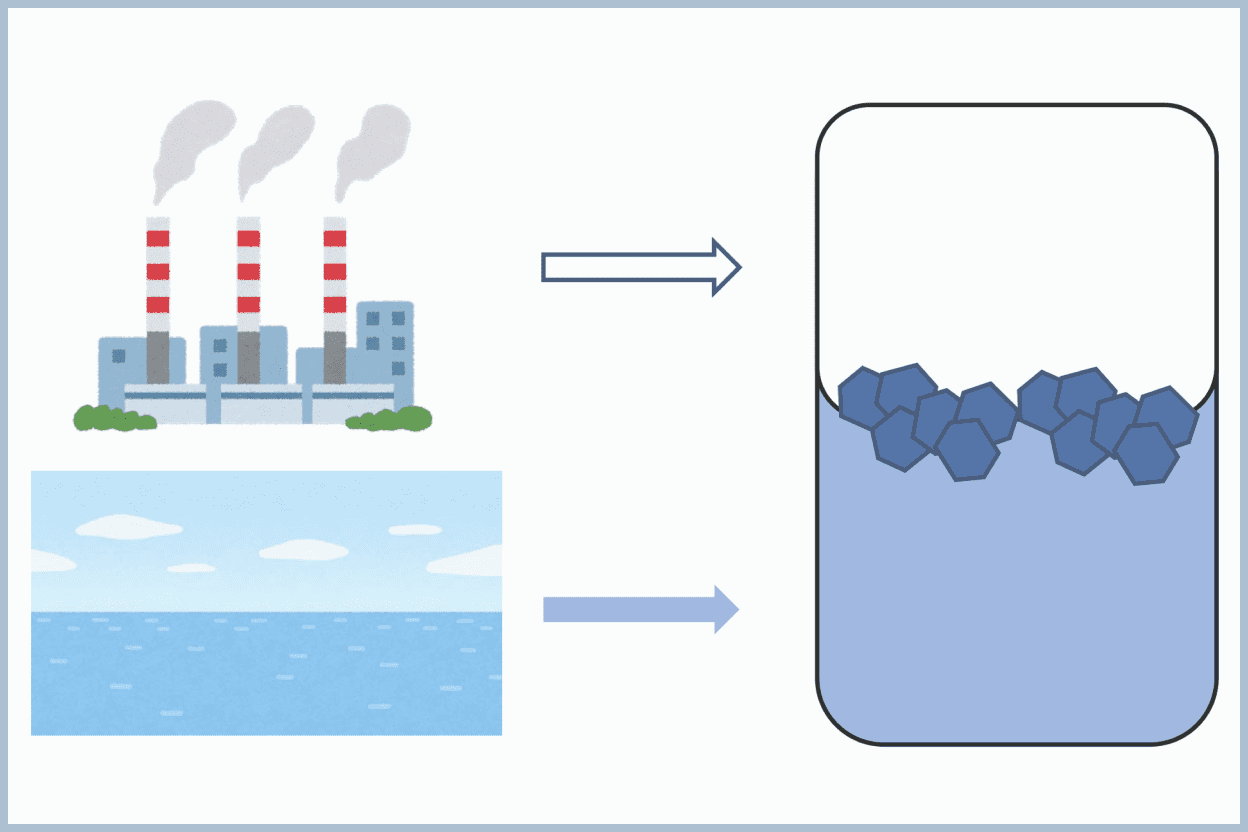Current Research
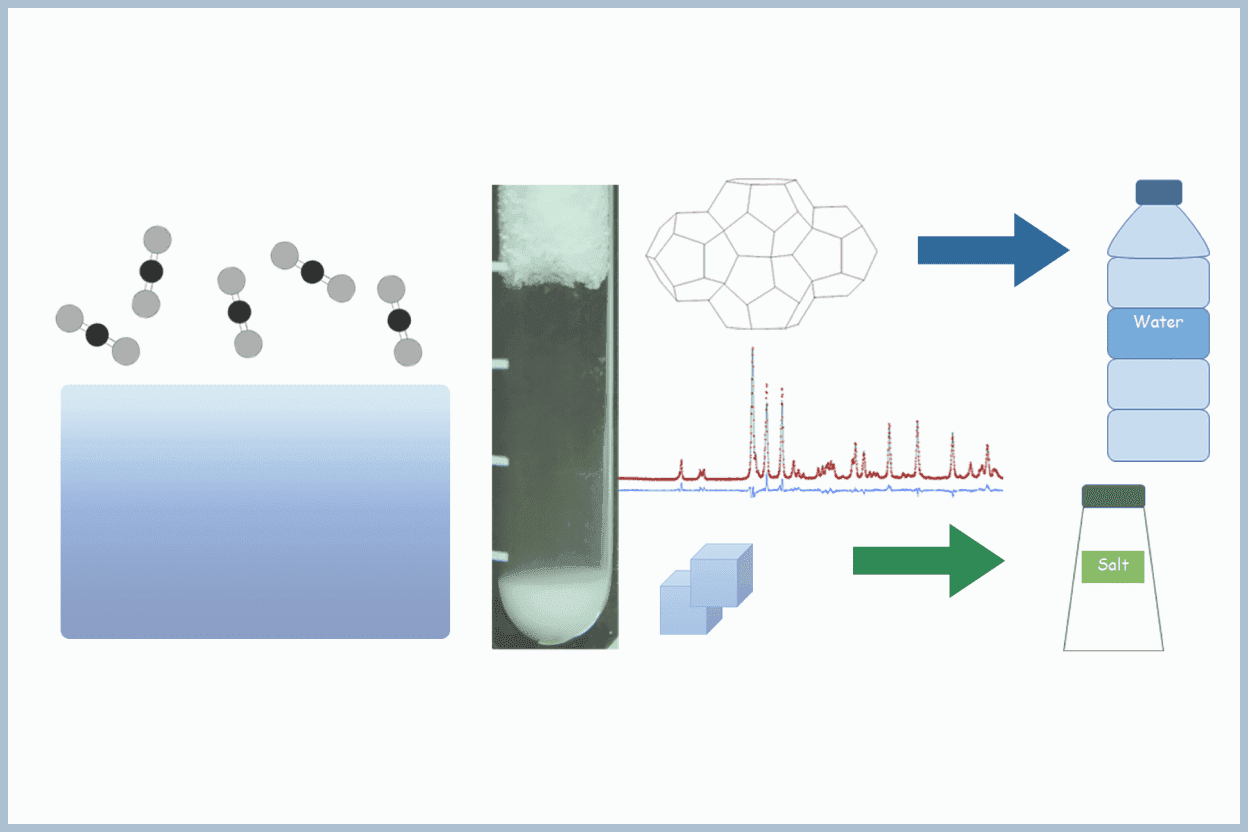
-
Y. Agatsuma, M. Orita, Y. Sukegawa, K. Mekaru, R. Tamaki, R. Ohmura, K. Yasuda,
J. Environ. Chem. Eng., 2025, 13, 118029 -
A. Gibo, S. Nakao, R. Ohmura, K. Yasuda,
J. Ind. Eng. Chem., 2025, 147, 512–521 -
K. Mekaru, T. Miyagi, A. Mishima, I. Uehara, R. Ohmura, K. Yasuda,
J. Chem. Thermodyn., 2024, 189, 107185 -
M. Maruyama, S. Tomura, K. Yasuda, R. Ohmura,
J. Clean Prod., 2023, 385, 135425 -
A. Gibo, S. Nakao, S. Shiraishi, S. Takeya, S. Tomura, R. Ohmura, K. Yasuda,
Desalination, 2022, 539, 115937 -
K. Kamochi, A. Tripathi, M. Taoka, R. Ohmura, K. Yasuda,
J. Chem. Thermodyn., 2022, 175, 106886 -
M. Tanaka, K. Tsugane, D. Suga, S. Tomura, R. Ohmura, K. Yasuda,
ACS Sustainable Chem. Eng., 2021, 9, 9078–9084 -
R. Nakane, Y. Shimosato, E. Gima, R. Ohmura, I. Senaha, K. Yasuda,
J. Chem. Thermodyn., 2021, 152, 106276 -
R. Nakane, E. Gima, R. Ohmura, I. Senaha, K. Yasuda,
J. Chem. Thermodyn., 2019, 130, 192–197
Seawater Desalination/Salt Production
The world is facing a water shortage due to population growth and industrial development. This issue is particularly severe in regions such as the Middle East and North Africa. Even in Okinawa Prefecture, water shortages are common, especially in remote island areas. Therefore, technology development for desalinating seawater, which accounts for 97.5 % of the water on Earth, has long been pursued.
Hydrates are known to have the characteristics of not incorporating salt into their crystal structure, making them usable for desalination of seawater. In our group, we are developing a technology that separates seawater into fresh water and salt by forming and decomposing hydrates, thus simultaneously performing seawater desalination and salt production. The operation of these two technologies simultaneously is expected to have advantages in terms of energy and cost-effectiveness.
This seawater desalination/salt production technology is a globally applicable technology that contributes to solving regional issues such as the alleviation of freshwater shortage in remote island areas and the improvement of salt production efficiency as an industry.
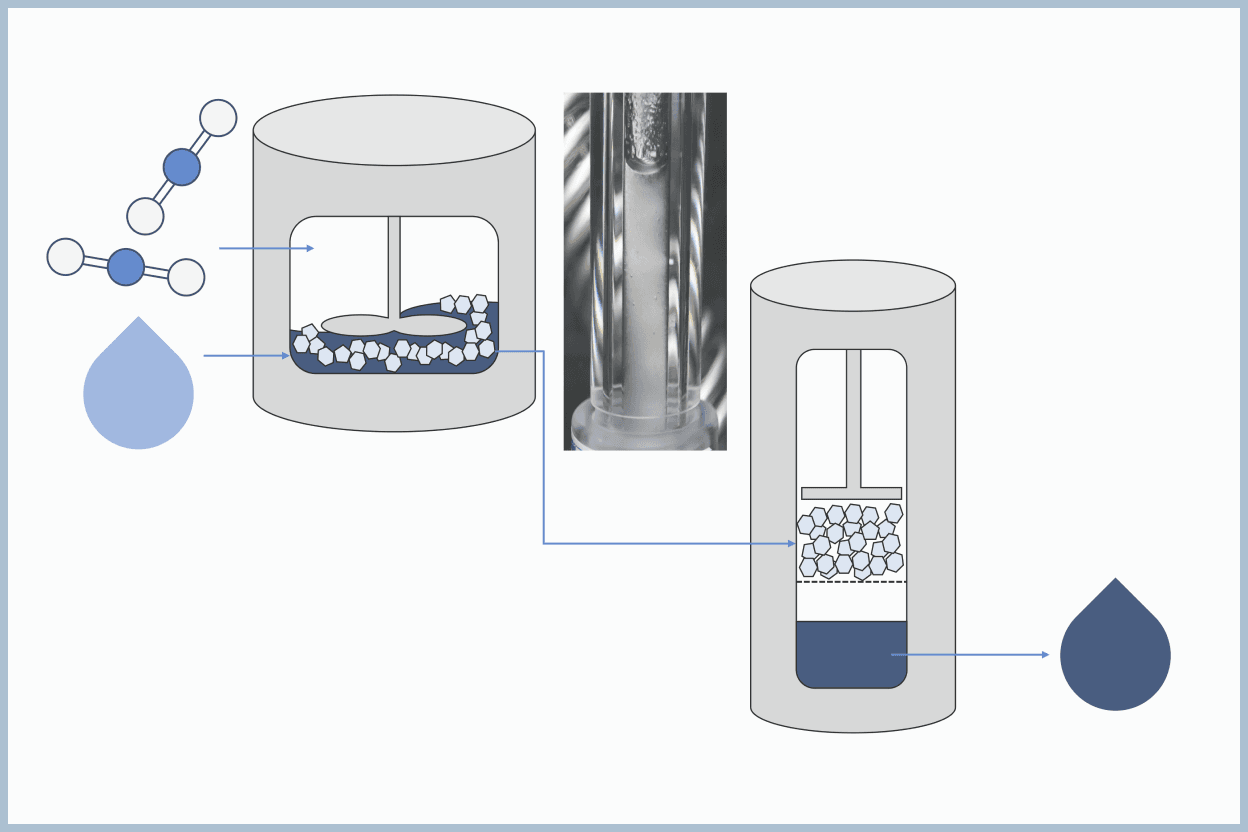
Lithium Concentration
From smartphones to electric vehicles, lithium-ion batteries are used as high-performance batteries, and their usage is increasing year by year. The demand for lithium, which is used in these batteries, is also increasing, and efforts are being made to secure its supply and develop recycling technologies. In this context, lithium has the property of being easily soluble in water, so it is necessary to concentrate lithium in aqueous solutions for efficient supply and recycling.
Lithium has the characteristics of not being incorporated into hydrates in the same way as the electrolytes in seawater. Therefore, it is possible to concentrate lithium by reacting an aqueous solution containing lithium with a guest to produce hydrates, and then recovering the remaining aqueous solution.
In our group, we are developing lithium concentration technology using hydrates by measuring the conditions under which hydrates are formed from aqueous solutions containing lithium and analyzing the concentrated solutions obtained.
Carbon Dioxide Capture and Sequestration
Renewable energy is being increasingly utilized towards achieving a carbon-neutral society, but fossil fuels are still widely used as a source of energy for humanity. By capturing and storing the carbon dioxide produced from the consumption of fossil fuels, it is possible to reduce the impact on global warming by suppressing its emission into the atmosphere.
Hydrates have the characteristics of "preferentially incorporating certain components when formed from mixed gases", and by reacting exhaust gases with water to produce hydrates, gas with a high concentration of carbon dioxide can be obtained by decomposing the hydrates. By storing this gas, it is possible to reduce the emission of carbon dioxide into the atmosphere. This technology is expected to be effective in large carbon dioxide emission sources such as thermal power plants and steel mills, which are often located along the coast and require a large amount of water. We are performing research on technology that combines carbon dioxide separation and seawater desalination.
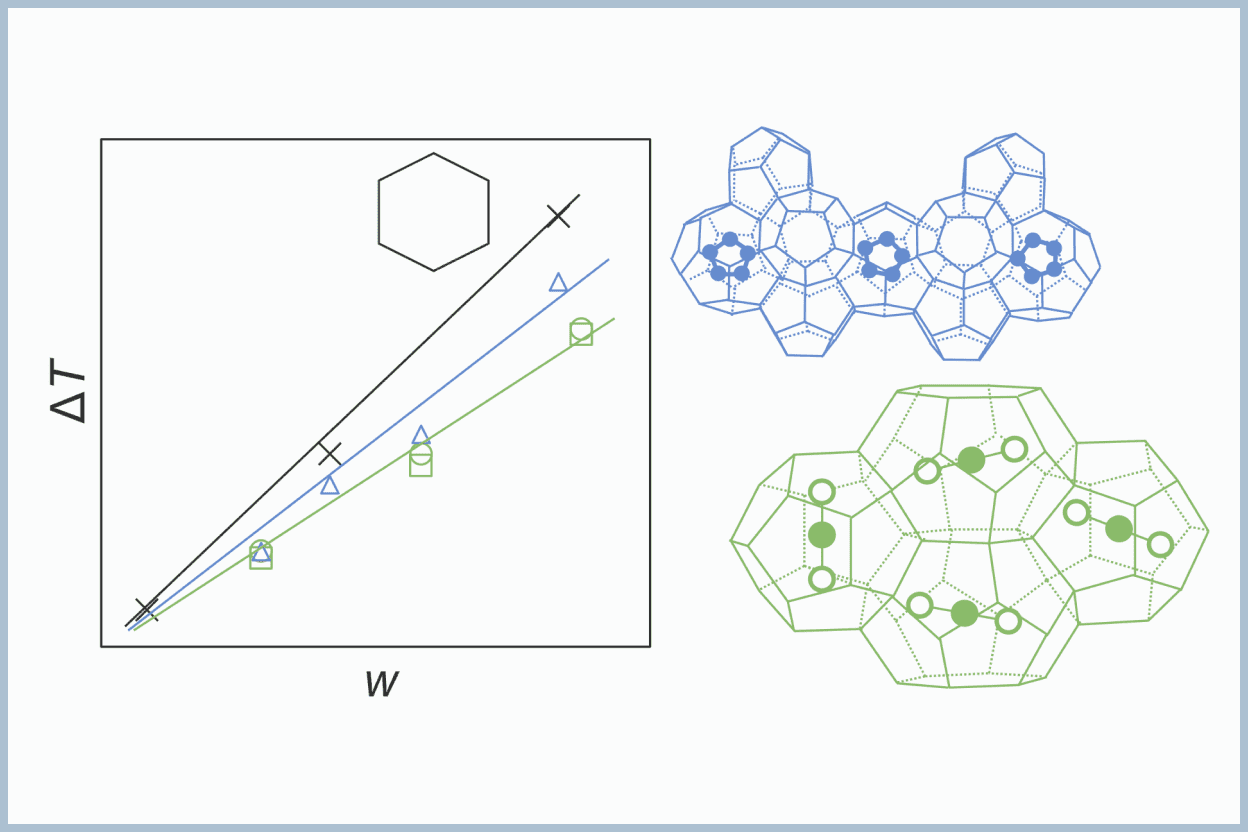
-
K. Yasuda, R. Ohmura,
Int. J. Thermophys., 2024, 45, 139 -
H. Ito, A. Gibo, S. Shiraishi, K. Yasuda, R. Ohmura,
Int. J. Thermophys., 2023, 44, 128 -
H.D. Nagashima, T. Miyagi, K. Yasuda, R. Ohmura,
Fluid Phase Equilib., 2020, 517, 112610 -
S. Takeya, S. Alavi, S. Hashimoto, K. Yasuda, Y. Yamauchi, R. Ohmura,
J. Phys. Chem. C, 2018, 122, 18134–18141 -
Y. Nema, R. Ohmura, I. Senaha, K. Yasuda,
Fluid Phase Equilib., 2017, 441, 49–53
Physical Chemistry/Thermodynamics of Clathrate Hydrates
Hydrate formation and decomposition occur in a complex state where gas, liquid, and solid are mixed because many guests are insoluble in water. Therefore, to understand the phenomena that occur in the hydrate forming system, it is necessary to understand physical chemistry and thermodynamics in multiphase multicomponent systems. From a physical chemistry perspective, information on how the arrangement of molecules in the hydrate changes depending on the guest determines the physical properties of the hydrate. In addition, by introducing thermodynamics, experimental information on the conditions for hydrate formation and decomposition can be linked with theory.
In our group, we are performing research to understand the physical chemistry and thermodynamics of hydrates. Although it is fundamental science, we expect that by continuing such research, hydrate-related technologies will spread even further in the future.
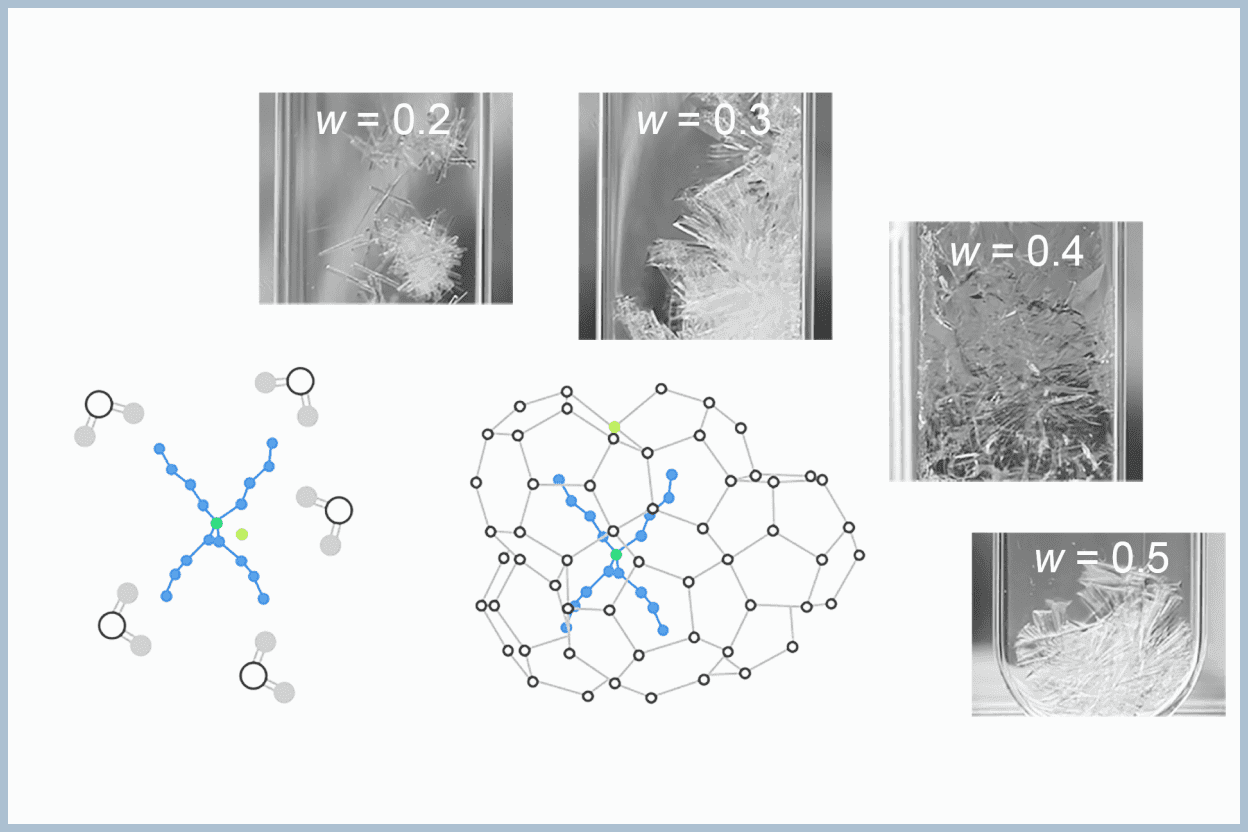
Laboratory Experiments
We perform laboratory experiments using hydrates in Laboratory Experiments in Energy and Environment Engineering I (mandatory in the second semester of the second year) and II (mandatory in the first semester of the third year). The subject is updated every two years.
So far, we have performed experiments on the observation of TBAB hydrate crystal growth (from the second semester of 2018 to the first semester of 2020), the formation of carbon dioxide hydrate (from the second semester of 2020 to the first semester of 2022), and the separation of carbon dioxide by hydrate formation (from the second semester of 2022 to the first semester of 2024). Currently, we are performing an experiment on the carbon dioxide hydrate formation for carbonated food (from the second semester of 2024).
Research and development are being conducted for the use of hydrates in many technologies related to energy and the environment, and it is possible to generate them in about 90 minutes, equivalent to a single university lecture. Water is of course a suitable material, and there are many other readily available substances. Therefore, we believe that hydrates are a suitable theme for student experiments in the coming age.


